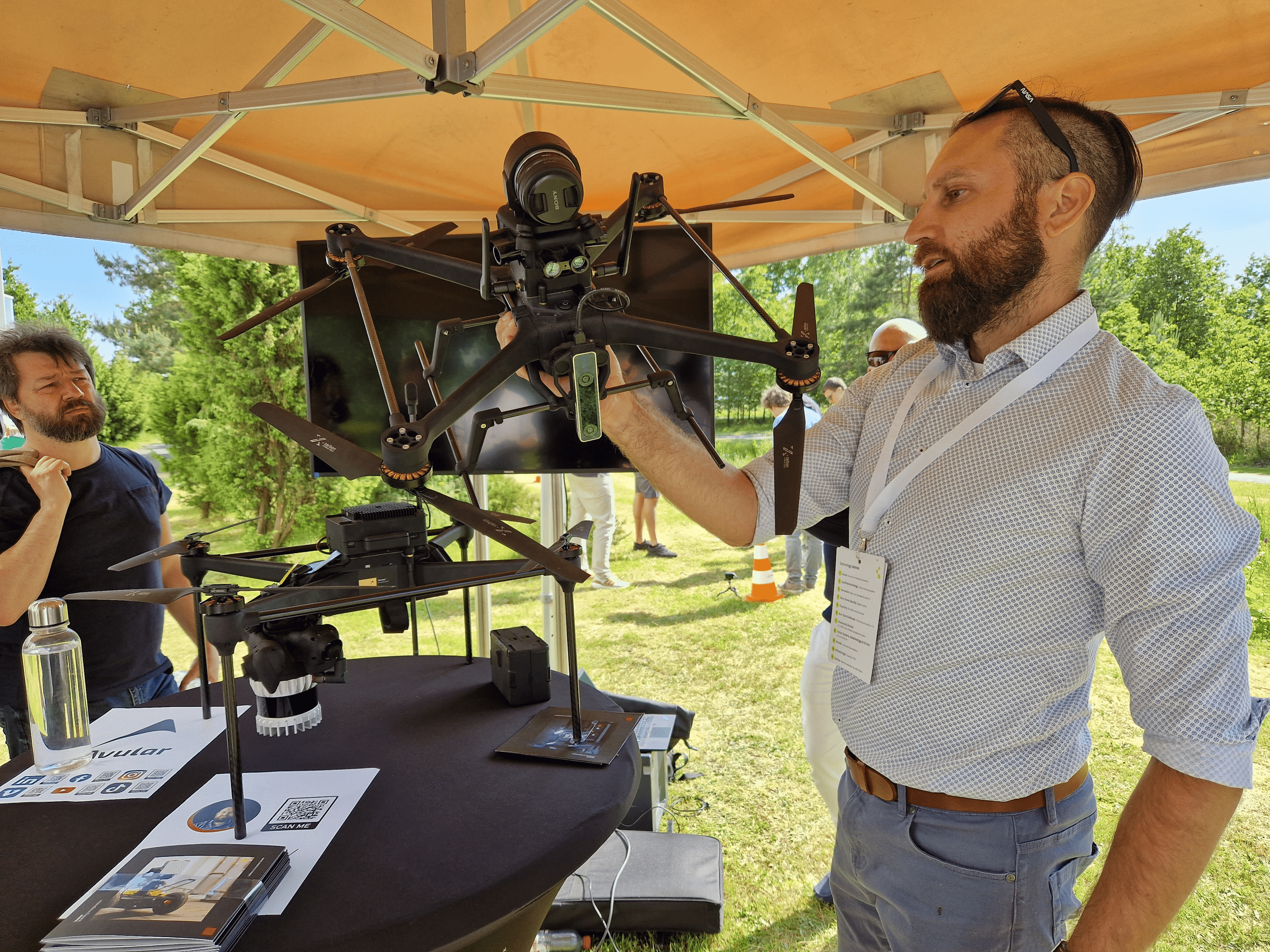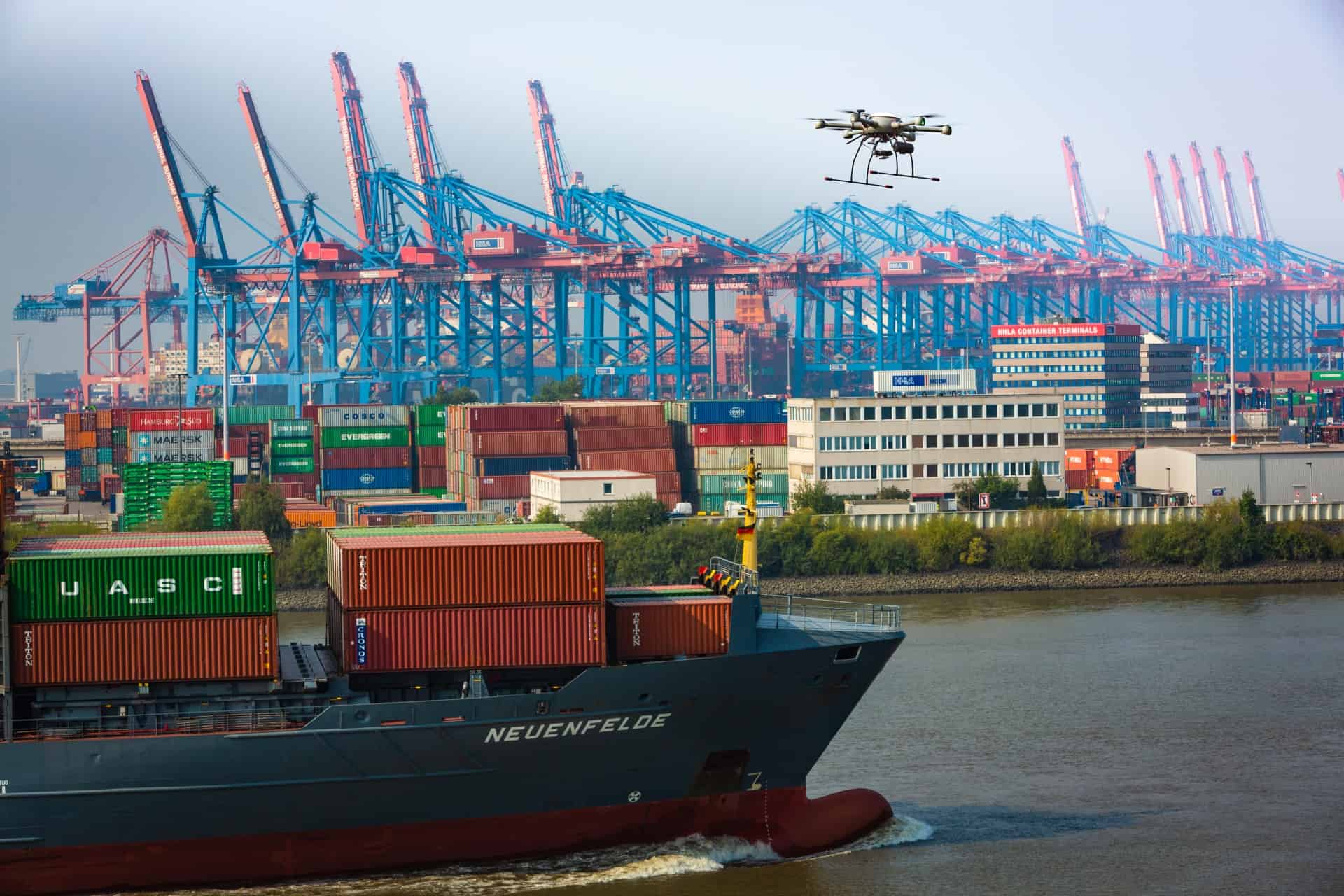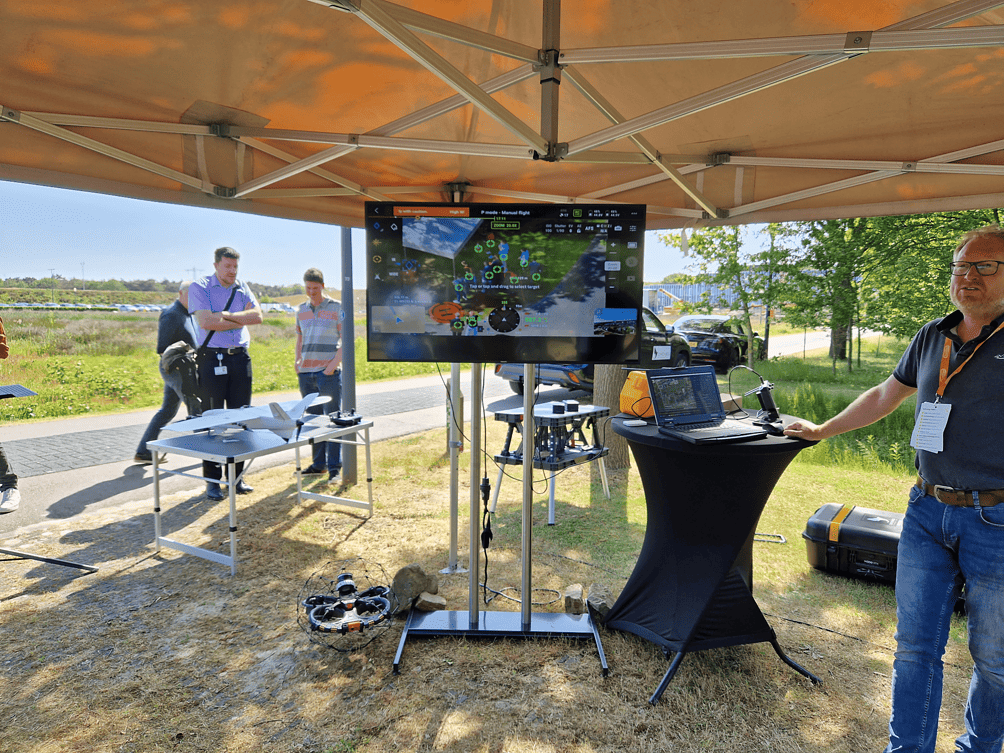
We all know that drones are good at taking pictures and carrying freight. But at the launch of the Urban Air Mobility Hub at the High Tech Campus Eindhoven, it became clear that future drones will be capable of much more than that. The campus laid the foundation for a new air mobility and innovation ecosystem and a Beyond Visual Line of Sight (BVLOS) test site. In addition to the talks, attendees could also glimpse some of the latest drone technologies, which kept the campus airspace busy for an afternoon.
- Autonomous flying drones were on display;
- A few demos presented different airspace management systems;
- A student team introduced its in-flight battery swap technology;
Autonomous flying
From a docking station, an aircraft takes off for a mission. It flies autonomously, and as the task is completed, it lands at the station again. The demo, presented by Droneland, displayed the docking system and the integrated technology to plan and execute a mission. Flights happen autonomously, but a pilot can always intervene to control the aircraft from a distance. Spotting Droneland’s plane, there was the nearby Airhub fleet management system, which works as a ground control app for remote drone operations control.
At another booth, an exhibitor flies a drone, and then, when the aircraft takes off, he stops controlling it as the drone continues its mission, flying autonomously. The demo was organized by Avular, which is developing systems to automatize machines – including robotizing drones. Their modular drone platform allows embedding tools and sensors into aircraft. Use cases include flying an autonomous drone to get a digital twin of a forest and an industrial chimneys inspection.
A high-quality video streaming capability is needed to accommodate autonomous drone flying. Most crucially, latency must be as low as possible to operate the aircraft optimally. A joint demo by Solition, Vodafone Ziggo, and the 5G Hub presented a remote driving system. The demo didn’t involve a drone, as visitors could remotely drive a small electric vehicle nearby, seeing from a screen real-time camera footage. The same concept can be applied to drones, too, allowing for easier BVLOS drone operation. While distance isn’t a problem, interferences certainly are, and Soliton is working towards new solutions to stabilize the connection.
AI to analyze drone footage
One of the primary use cases of drones is for inspection. Having an embedded camera, they can, while flying, record hours of videos of buildings, industrial settings, or wind turbines. Making sense of all this footage is a time-consuming task that companies have to take on to spot defects and then intervene. Artificial Intelligence (AI) can simplify this work, as Aerovision is developing a platform to analyze video footage using it. The application will be released by the end of the year, allowing companies to upload footage and then use AI models to spot defects, count objects, or measure distances, saving time and getting accurate results.
Easing airspace management
Managing the airspace is topical to ensure the safe deployment of drones, as three demos showcased technologies to operate in the skies. Altitude Angel was one of them and presented its platform for managing airspaces. Through it, those who need to fly can submit a detailed flight request – that specifies the kind of drone and the journey – that airspace managers can accept. Moreover, the platform allows for monitoring airspace operations as they happen – checking if they conform to the submitted flight plan, for instance.
Flyvercity offers 5G drone services, bridging the gap between aviation authorities and mobile network operators. Specifically, the Israeli company provides unmanned traffic management services, enables operations in busy airspaces, and boosts safety, tracking, and navigation. In building the ecosystem for easing drone technology adoption, the firm aims at bringing all stakeholders together as drone technologies gain momentum.

To get a more detailed view of what happens in a given airspace, Senhive developed passive sensors to detect drones and manage conflict and risks. This topic is particularly relevant in areas like airports and ports, where drones are starting to be deployed, but they might still be interfered with during their operations. For instance, aircraft under 250 grams of weight don’t need any authorization to fly, but they might still intrude into airspace where commercial drones operate. Through radar, they can spot up to 96 percent of the drones in airspace.
In-flight battery swap
Students are at the forefront of drone research, too. Aero Team Eindhoven, from the Eindhoven University of Technology (TU/e), presented the activities of their cohort. One of their aims is to be the first to complete an aerial battery swap. Their idea is to refuel cargo drones in the air utilizing a second drone that swaps the battery, extending the flying range. In their view, swapping while flying can be an effective solution, as landing can’t happen everywhere. Furthermore, the TU/e team is also working with Virtual Reality technologies to forecast drone operations scenarios.

Rescue and security drones
One of DroneQ’s aircraft was watching demos visitors from the sky. The drone spots and follows targets with its technology, displaying real-time video on a screen. The Dutch firm has a long experience in maritime salvage and offshore industry, embedding sensors and cameras into drones to survey wind turbines, pipelines, and cables. In addition, the company also targets cargo delivery, as their drones can be deployed for transporting goods to and from remote locations.

Security is another use case drones can be used. Nimo Drone Security’s SpiderControl allows for effective monitoring sites. Their technology features a sensor web of mobile sensors, an automated security drone, and an app to operate the platform. Examples include the transport sector, where storage and transshipment occur over vast areas – as the ones of ports can be – and the monitoring of critical infrastructures such as power plants.
More buzzing to come
As technologies develop and regulation picks up, we will see more and more drones operating in the skies. Moreover, autonomous drones will fly with a pre-arranged flight plan. Similar to conventional planes, authorities will also know in detail who is flying and where. In that way, they are making sure they will minimize conflicts and keep the skies safe.

